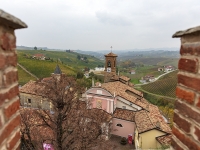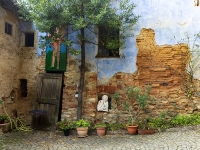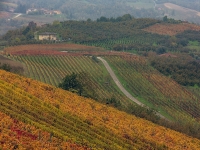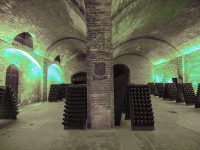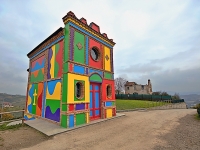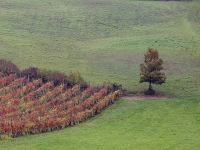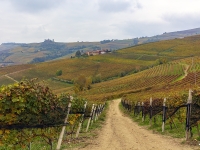Reisen
Well protected by UNESCO World Heritage Site
UNESCO Langhe, Roero e Monferrato
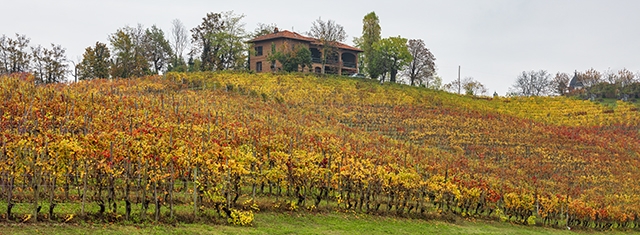
Lanscape Langhe italy (Quelle: Roberto Magni By Foto ReD Photographic Agency)
GDN -
The Vineyard Landscape of Piedmont: Langhe-Roero and Monferrato.
The Langhe are made up of an extensive hilly system, defined by the course of the rivers TÃ naro, Belbo, Bòrmida di Millesimo and Bòrmida di Spigno
The Langhe are made up of an extensive hilly system, defined by the course of the rivers TÃ naro, Belbo, Bòrmida di Millesimo and Bòrmida di Spigno
Langhe villages at low altitude: area with altitudes generally less than 600 m; area of wines and truffle (renowned Alba white).
high altitude Langhe villages: area with altitudes up to 896 m. (Mombarcaro); the woods and the cultivation of the precious variety of hazelnuts "tonda gentile delle Langhe" dominate.
Langhe Astigiane: area in the south of the province of Asti, with a peak of 851 m in the municipality of Seròle.
Gourmets get ready to indulge: the rolling hills, valleys and townships of southern Piedmont are northern Italy's most redolent pantry, weighed down with sweet hazelnuts, rare white truffles, arborio rice, delicate veal, precious cheeses and Nebbiolo grapes that metamorphose into the magical Barolo and Barbaresco wines. Out here in the damp Po river basin, the food is earthy but sublime, steeped in traditions as old as the towns that foster them. There's Alba, the region's vibrant, pretty capital; Bra, home of the Slow Food Movement; Pollenzo, host to the University of Gastronomic Sciences, and the constellation of charming villages that includes La Morra, Neive, Barolo and Barbaresco. Further north, the Monferrato area occupies a fertile triangle of terrain between Asti, Alessandria and its historical capital, Casale Monferrato. Vineyards fan out in all directions interspersed with castles and celebrated restaurants.
Cantine Bosca
Top choice winery in Langhe, Roero & Monferrato
Some 28km south of Asti, the Cantine Bosca is one of several historic wineries that produce the famed sparkling wine of the area (the DOCG Asti Spumante, made from Moscato grapes). Bosca is also known for its 'underground cathedrals', an impressive series of brick-walled halls and tunnels built below the hamlet of Canelli. You can book free visits online or over the phone, but advanced reservations are essential.
Cappella del Barolo
Alba's winemaking-restaurateuring Ceretti family has commissioned a number of site-specific artworks in the region and this never-consecrated chapel is one of the most wonderful. Its Sol LeWitt exterior and David Tremlett interiors were added in 1999. Lewitt's playful intervention is visible from across the vines, but don't miss Tremlett's work inside, which is both serene and enlivening. It's always open, just push the door. It's located around 2km southeast of (and downhill from) La Morra and is set among rolling vineyards.
The climate of the Langhe
In the lower Langhe it has a Po climate, temperate in the maximum temperatures on the hills.
In the Alba plain, maximum summer temperatures above 30 ° are not uncommon.
In the upper part of the Langhe the climate can be defined as Apennine, with Po influences.
Summers are generally cooler and breezy than in the lower area of the Langhe (average in July around 20 °, on the hills); the winters are cold, in the valleys (minimums of −5 / −10 ° are frequent) and milder on the hills (average of the minimums around 0 °).
Thermal inversions are very frequent, due to the difference in insolation.
Annual rainfall varies from about 800 mm. of Alba at 1,100 of the Apennine watershed.
The rainfall regime is sub-coastal, with a main summer minimum (July) and a secondary winter minimum; the absolute maximum is autumn; spring rainfall tends to be highly variable over the years.
Between June and July, especially after a stingy spring, the risk of aridity is frequent (also accentuated by the dry and windy climate).
An average rainfall of around 100-150 mm is guaranteed in the summer quarter. (often concentrated in a few violent storms, even accompanied by hail).
Sometimes, in May, June and July, a wind called "marin" can blow, which brings some cool air to high altitude, as the air coming from the south is affected by the Ligurian sea, still cold.
The Langhe are very snowy, with an annual average of 50-100 cm., Even at low altitudes, with permanence on the ground for over 30 days.
In recent years, there has been a serious reduction in rainfall, including snowfall, especially since late spring, and an increase in the daily autumn intensity (on September 15, 2006, more than 100 mm. Of rain fell in the 24 hours).
weitere Informationen: https://www.redmagazine.red
Für den Artikel ist der Verfasser verantwortlich, dem auch das Urheberrecht obliegt. Redaktionelle Inhalte von GDN können auf anderen Webseiten zitiert werden, wenn das Zitat maximal 5% des Gesamt-Textes ausmacht, als solches gekennzeichnet ist und die Quelle benannt (verlinkt) wird.

